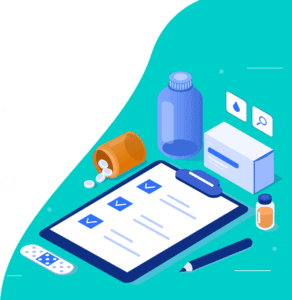 Technology is getting better and more convenient. Now, patients no longer have to drive themselves to their physician for a check-up. They can easily get a consultation via video chat.
Technology is getting better and more convenient. Now, patients no longer have to drive themselves to their physician for a check-up. They can easily get a consultation via video chat.
Do you need to track your medication? There’s an app for that, too. Every piece of health-related technology is designed to simplify and personalize the process while improving the overall patient experience.
Pharmacies can benefit from the growth of medical technology. Beyond patient-related technology, such as steps trackers and apps, the pharmacy industry has been taking large steps to make the profession more advanced. Pharmaceutical floors, for instance, have witnessed the major shifts focused on minimizing paperwork, keeping track of prescriptions, automating prescription fills and more.
Now, technology enables pharmacists to create programs that automate their patient’s prescription refill history and check the prescriptions recommended or filled by other pharmacists. This helps pharmacies improve their monitoring and tracking for the sake of their patients.
How is technology enhancing the pharmacy business? What are the technologies you can invest in your business? Let’s take a look:
Advancements in Pharmaceutical Technology
Prescription Drug Monitoring Programs
Prescription Drug Monitoring Programs (PDMPs) collect state-specific controlled substance prescription data. These programs are fully operational or currently in development in most states.
With the PDMP, pharmacists can check the database first before filling prescriptions for controlled substances. It is an optional practice but a highly encouraged one. The data contained in a state’s PDMP can help pharmacists and physicians ensure the safety of their patients when recommending controlled substances.
Currently, many pharmacies have access to PDMPs. This enables their pharmacists to determine the potential risks of misuse or overuse and verify patient safety.
Automated Dispensing Units/Cabinets
An automated dispensing cabinet (ADC) is a computerized cabinet or drug storage device designed for hospital use. These cabinets or units enable pharmacists to store and dispense medication near the point of care while tracking and controlling drug distribution. This reduces improves fill time, reduces human error and allows pharmacists to focus on their patients more than filling the prescription.
Medication Reminder Devices
The market has many devices that provide patients with smart medication reminders. The technology for these include flashing lights and alarms when a patient needs to take their meds, devices that lock after taking the right dose and compliance dashboards that show patients their next scheduled dose.
Medication Therapy Management (MTM)
Medication Therapy Management is an online platform that physicians and pharmacists use to manage a patient’s medication. The pharmacist will review all the medications prescribed to the patient by their doctors, along with any herbal or over-the-counter medication, to identify potential medication concerns. Problems may include duplication medications, medications not used correctly and unnecessary medications.
Through the MTM, the pharmacist can provide patients with medication-related consultation, advice and education to the patient and/or their caregiver to ensure the proper medication use.
How Technology Improves Pharmacy Businesses
Making smart use of advanced digital solutions enables pharmacists to improve several areas of their business. Here are some areas that see the biggest improvement when you incorporate technology into your operations.
Adherence
When patients are adherent, they are more likely to experience positive treatment outcomes. Pharmaceutical technology and software enable pharmacies to create medical synchronization programs (otherwise known as med sync) to improve patient adherence.
The statistics speak volumes on the positive effects of med sync. Med sync patients are 2.5 times more likely to be adherent. With improved adherence numbers come less lost profits and missed refills, enabling pharmacies to generate an additional $90,000 in revenue for every 100 patients with multiple medications.
Safety
Electronic prescribing (e-prescribing) reduces prescription errors, ultimately improving patient safety by enabling healthcare providers to directly send prescriptions to the pharmacy. Automated processes eliminate data entry errors due to illegible handwriting and other old-fashioned prescription processes.
Also, clinical alerts and flags built into e-prescribing technologies improve medication safety, which reduces the risk for errors.
Compliance
Modern technology helps pharmacies streamline their manual tasks, which are associated with regulatory compliance requirements. This includes practices that involve prescribing, dispensing and distributing controlled substances.
Efficiency
For pharmacies, especially pharmacists working in smaller, community pharmacies, technology gives them more time to accomplish their tasks. Digital solutions enable technicians and pharmacists to work more efficiently and free up their schedules so they can spend more time with patients.
Automation also enables pharmacists to speed up manual processes that slow down the workflow (e.g. tracking and reconciling medical billing claims and checking eligibility verification). From CVS COVID testing to medication for mental health needs, technology improves the efficiency of all pharmacy processes.
Pharmacies of all sizes can benefit from the advances in technology to interact and engage with patients, enhance business operations and patient outcomes. That said, it’s time for your business to do the same.

